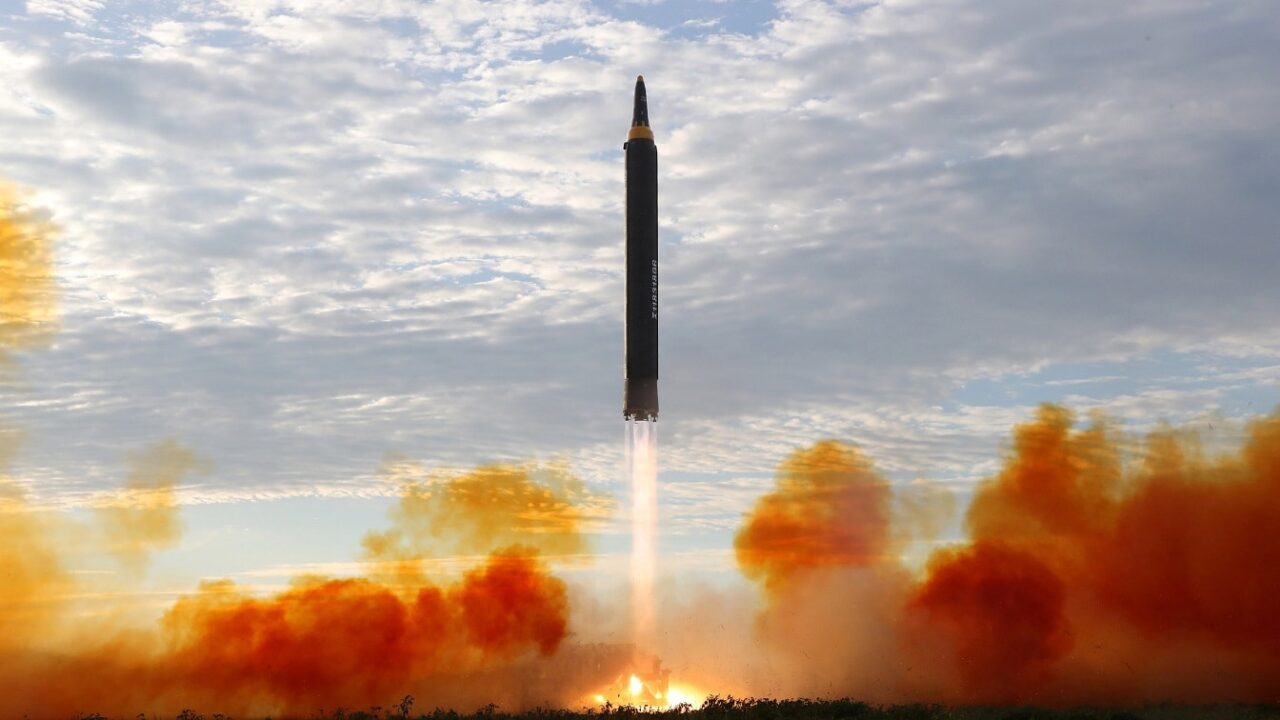Why We Should Take North Korea’s Latest Threat Seriously: In October 2021, standing beside his new, untested Hwasong-17 intercontinental-range ballistic missile at a defense expo in Pyongyang, North Korean leader Kim Jong Un was explicit about why he hadn’t shown much interest in the Biden administration’s overtures.
Since the conclusion of their North Korea policy review in May 2021, Biden administration officials had, at least in principle, been saying many of the right things. Sung Kim, Biden’s special representative for North Korea, had, for example, repeatedly emphasized that the United States was ready to meet North Korea anywhere and anytime—to discuss any issues of interest.
Other officials have pushed back on North Korea’s perennial claims that the U.S. harbors a “hostile policy” by emphasizing that the U.S. has no intention to change North Korea’s regime.
But, in October, Kim said he didn’t care much for words. “The United States has frequently sent signals that it is not hostile to our state, but its behaviors provide us with no reason why we should believe in them.”
This brings us to January 2022. Following North Korea’s tests of a new maneuverable reentry vehicle-equipped ballistic missile, the United States Treasury Department announced sanctions against individuals and entities involved with illicit weapons-related procurement activities.
For Kim, this action appears to have overwritten all previous words. At a Politburo meeting this week, Kim indicated that his patience with Washington was wearing thin and that he might reconsider his April 2018 self-imposed moratorium on testing long-range missiles and nuclear weapons.
The North Koreans repeatedly cited that moratorium as a step that deserves rewards—or “corresponding measures”—from the United States throughout the period between the 2018 Singapore summit and the aftermath of the 2019 Hanoi summit.
This week’s politburo meeting takes Kim closer than ever to pulling back from that pledge. Kim didn’t corner himself; he gave himself ample flexibility, including on a timeline, but suggested that the Workers’ Party should “promptly examine the issue of restarting all temporarily-suspended activities.”
Despite the Biden administration’s sanctions this month, it is likely that North Korea would have gotten here anyway. In January 2021, Kim, prior to Biden’s administration, outlined a wide-ranging military modernization agenda at the 8th Party Congress of the Workers’ Party of Korea.
That agenda included, among other items, new intercontinental-range ballistic missiles—including solid-fuel ICBMs and multiple warhead-capable ICBMs—and tactical nuclear weapons. The first of those objectives would certainly require new ICBM flight tests; the latter may require a return to nuclear testing, though this is less certain.
The modernization agenda was laid out over a five-year period, from 2021 to 2026. As a result, the Biden administration’s recent sanctions may be a convenient excuse for North Korea to proceed with testing that it intended to pursue anyways—perhaps on an accelerated timeline.
During the politburo meeting, Kim also emphasized two important upcoming anniversaries for North Korea—both in the coming months. First, his father’s 80th birthday is due in February, and his grandfather’s 110th birthday is due in April. In previous years, North Korea has staged satellite launches around these dates.
While Kim hasn’t said what will be done to commemorate these dates this year, he noted that “No holidays are more significant than the Day of the Sun and the Day of the Shining Star,” using North Korea’s official titles for those dates, and that these deserved to be celebrated “with splendor.”
All of this points to a rockier 2022 in Northeast Asia—and the possibility of a new crisis between the United States and North Korea. The Biden administration has, to date, not treated North Korea as a major priority, but Pyongyang has always been adept at making itself a priority in Washington.
As the year picks up, we should expect more missile testing. Kim Jong Un shows few signs of backing down.
Ankit Panda is the Stanton Senior Fellow in the Nuclear Policy Program at the Carnegie Endowment for International Peace. An expert on the Asia-Pacific region, his research interests range from nuclear strategy, arms control, missile defense, nonproliferation, emerging technologies, and U.S. extended deterrence. He is the author of Kim Jong Un and the Bomb: Survival and Deterrence in North Korea (Hurst Publishers/Oxford University Press, 2020).
A widely published writer, Panda’s work has appeared in the New York Times, the Washington Post, Foreign Affairs, Foreign Policy, the Bulletin of the Atomic Scientists, the Diplomat, the Atlantic, the New Republic, the South China Morning Post, War on the Rocks, Politico, and the National Interest. Panda has also published in scholarly journals, including Survival, the Washington Quarterly, and India Review, and has contributed to the IISS Asia-Pacific Regional Security Assessment and Strategic Survey. He is editor-at-large at the Diplomat, where he hosts the Asia Geopolitics podcast, and a contributing editor at War on the Rocks.

